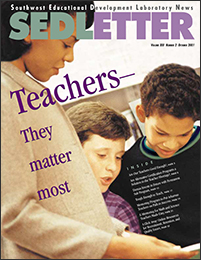Editor's Note: A Changing Teacher Workforce for Changing Times
For the past several years we've read predictions that the teacher workforce will change. During a recent "meet the teachers" night at my son's high school, I realized this may be coming true. Only one of my son's four teachers fit my conception of a traditional teacher, or at least my conception of a teacher who had followed a traditional career path.
One teacher, in his early 50s, had spent 25 years running a successful software programming company. The second teacher had retired two years ago, but came out of retirement to teach three classes because the high school desperately needed a calculus teacher. The third had traveled the world and attended law school before deciding what he really wanted to do was teach.
These teachers represent what may be a trend in the teaching profession, especially as schools and districts struggle to meet the estimated need of more than 2 million teachers over the next decade. Our educational workforce is changing - more and more we will see teachers coming into the classroom after they have had other careers. And with the core of the current teaching force comprising baby-boom generation teachers on the brink of retirement, districts and schools may need to lure teachers from retirement or tempt them to postpone retirement.
Nationwide, we have a more diverse and growing student population, a general population that is expecting more from its schools, and a dwindling supply of graduates who want to make teaching a career - roughly 30 percent of the college graduates who have been prepared to become teachers choose not to teach. In light of this situation, we should keep in mind that student achievement is related to teacher quality. To paraphrase the National Commission on Teaching and America's Future, teaching is what matters most. It will be up to those of us in the field of education to "think outside of the box" to recruit and retain the best and the brightest into the teaching force. We must also work more diligently to recruit and retain a more diverse teaching force, to ensure that we have teachers of the highest quality for all of our students. *
Articles in this issue of SEDLetter take a look at challenges associated with building the teaching force and at some of the strategies used by schools, districts, and state education agencies to address these challenges. "Are Our Teachers Good Enough?" considers teacher quality and ways to strengthen quality. "Are Alternative Certification Programs a Solution to the Teacher Shortage?" presents the good and bad sides of alternative certification programs, which increasingly are seen as a promising solution to the teaching shortage.
Teaching shortages in certain areas may also mean a substitute teacher shortage, which sends many school administrators scurrying to the classroom to help out when no subs are to be found. SEDLetter will visit one Texas school that has found a solution to its substitute shortage while helping to increase its supply of regular teaching staff, too. We are also going to take a look at two different mentoring programs - one that is focused on inducting new teachers in Arkansas and a SEDL mentoring project that takes advantage of the Internet to help math and science teachers.
This issue marks the debut of a column - "Voices from the Field" - that we plan to run on a regular basis. Each column will feature an essay from a teacher or administrator. In this issue, high school teacher Carey Clayton writes about why she considers leaving the profession and why she stays. We would love to hear from other teachers who would like to write essays related to these upcoming SEDLetter topics: family and community involvement in schools; teaching reading or mathematics; or professional development. If you are interested in contributing or sharing your comments, please contact me at lblair@sedl.org.
We at SEDL hope your school year is off to a great start!
* See the December 2000 issue of SEDLetter for a discussion on the need for a diverse teaching force and recruiting persons of color into the teaching profession.
Next Article: Are Our Teachers Good Enough?

